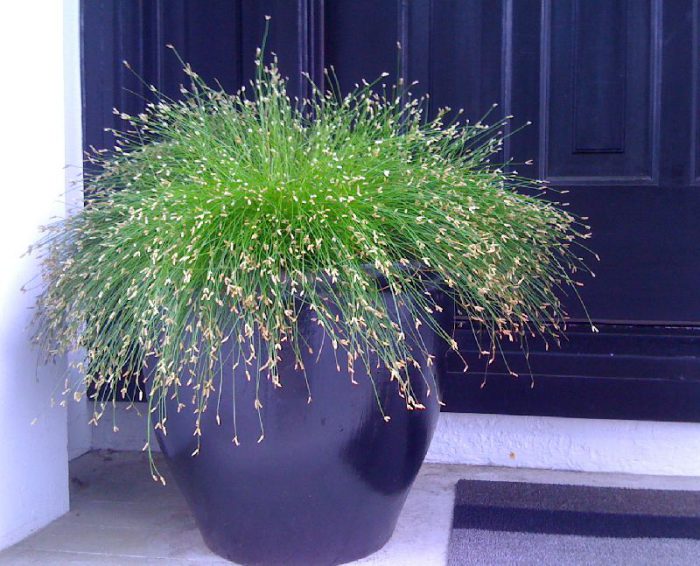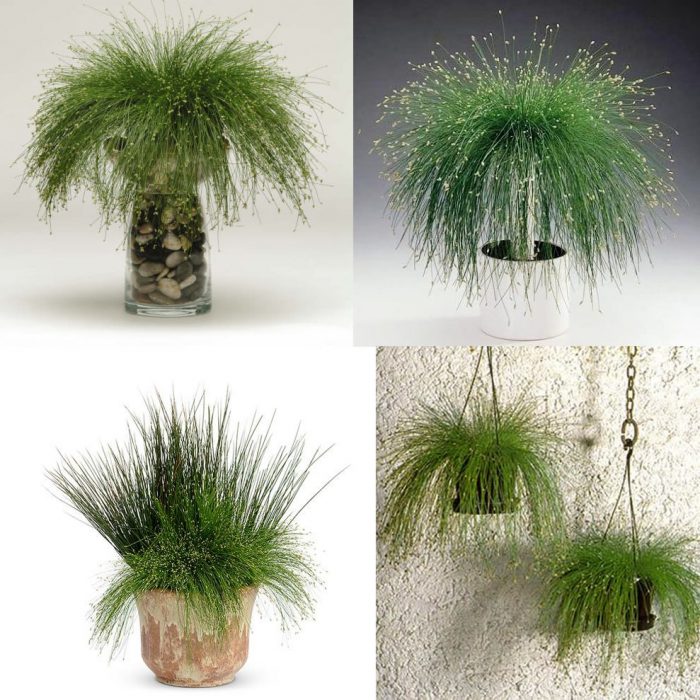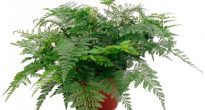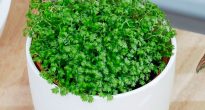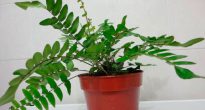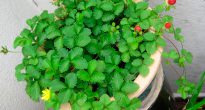In natural conditions skirpus found on islands such as Sardinia and Corsica. This herbaceous plant has a decorative appearance, and its stems can grow up to 100 centimeters in length. Over time, this plant takes the form of a spherical bush, which consists of many creeping, juicy, strongly intertwined branches.
The leaves are very small (0.5 centimeters long). They are asymmetrical and round. Thin cuttings are painted in a pale pink color. The flowers are rather inconspicuous.
Home-grown skirpus are undemanding to care for. Experienced flower growers advise placing them in the immediate vicinity of aquariums, in large bathrooms, and this plant is also excellent for composing compositions with other moisture-loving plants in a winter garden. This non-capricious plant will make any composition unusual and spectacular. It is also worth remembering that the skirpus is able to regulate the level of humidity in the room.
Grows well in hydroponics and ionitoponics. A small potted skirpus can be immersed in the bottom of the aquarium. As a result, you can achieve the effect of a natural reservoir.
The cut and dried panicles of this plant can add originality to any winter flower arrangement. In the summertime, freshly cut panicles are also used when making bouquets, giving them a unique tenderness and special charm of wildflowers.
The most popular type that is grown indoors is the drooping reed (Scirpus cernuus). This perennial rhizome plant can reach a height of 20 centimeters. It prefers to grow in groups that form a large number of dark green erect leaves. Spikelets, consisting of numerous small flowers, are colored purple. The plant blooms in the middle of the summer. It can be propagated by dividing the bush. It is able to survive average frosts and does not need to be looked after at all. They can be used to decorate not very large reservoirs, as well as areas where the earth has high humidity.
Content
Skirpus care at home
Illumination
There are no special requirements for lighting, but it is best if the light is bright and diffused. In this regard, it is recommended to place the skirp on a western-oriented window. In the warm season, you can move it outside, but do not forget to shade it from the direct rays of the sun.
Temperature regime
In order for the plant to feel normal, it just needs a moderate temperature. So, in the warm season, it should not rise more than 20 degrees, and in winter it should drop less than 8 degrees.
How to water
Loves moisture very much. In summer, abundant watering is required, it is recommended at this time to pour moistened sand into the pan, and put a pot on top. In the cold season, you need to water less often and less. It is impossible for the top layer of the substrate to dry out strongly. Top dressing is made with complex fertilizers, which can be introduced both in dry and liquid form.
Humidity
High humidity is required. If the room is hot, then the plant should be sprayed as often as possible, at least 2-3 times a day. Use soft water for this.
Transplant features
The transplant is carried out in the spring. You need a low and wide pot that is filled with sand and earth in a 1: 1 ratio. Before transplanting, you must carefully remove all overgrown stems. Extra roots can also be cut off
How to propagate
Propagated all year round by shoots.
Possible problems
Leaves dry - poor watering, it is necessary to increase it.
Rotting roots - waterlogging of the soil. It is necessary to normalize watering.

